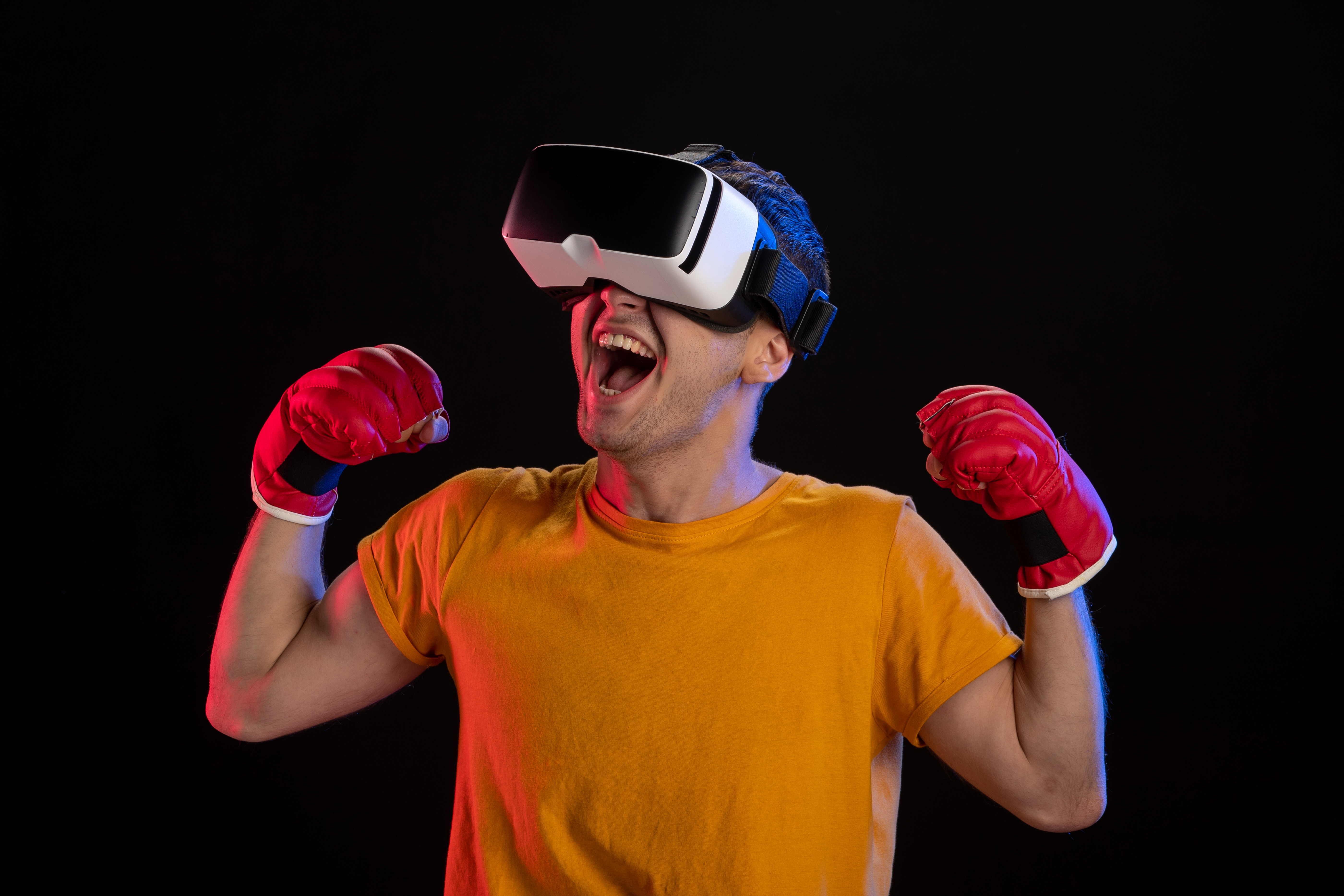Physical and digital worlds just collided in India’s gaming landscape, and the boundaries won’t return. Walk through any major Indian city today, and you’ll spot gamers chasing AR creatures overlaid on actual streets, whilst teenagers wearing VR headsets experience cricket matches from perspectives impossible in reality. This isn’t distant future speculation—Augmented Reality and Virtual Reality have transformed from expensive novelties into accessible technologies reshaping how India’s 556 million online gamers experience entertainment.
The convergence of affordable devices dropping below ₹10,000, expanding 5G infrastructure reaching tier-two cities, and homegrown developer talent using Unity and Unreal Engine created conditions where immersive gaming moved from science fiction to everyday reality. Indian developers aren’t just consuming Western AR/VR content anymore—they’re building location-based adventures through Mumbai’s lanes and VR experiences capturing India’s cultural contexts. But this technological leap brings complex legal questions about privacy, copyright in virtual spaces, and product liability when digital experiences cause real physical harm.
How Immersive Tech Actually Changed Indian Gaming
Urban India witnessed a surge in AR and VR gaming interest, marked by immersive titles delivering experiences once confined to imagination alone. Interactive AR layers allow games like Pokémon Go or location-based scavenger hunts to merge physical reality with playful virtual elements naturally. Cities themselves become game maps where landmarks trigger digital events, transforming mundane commutes into interactive adventures blending exploration with gameplay mechanics.
Meanwhile, VR headsets shed their niche status, becoming increasingly affordable whilst paired with expanding fibre and 5G connectivity, enabling seamless experiences. Players now step into expansive worlds experiencing first-person perspectives impossible on traditional screens—from cricket simulators replicating stadium atmospheres to adventures through Mumbai streets. Indian developers leveraging platforms like Unity 3D and Unreal Engine have integrated advanced AR features, including multiplayer coordination and real-world object interaction capabilities. Custom VR labs and training centres emerged across metros, building technical expertise whilst experimenting with narrative-driven and social experiences unique to India’s cultural context.
These innovations extend beyond entertainment—educational institutions explore VR for historical recreations, medical training simulations, and architectural visualisations that traditional methods couldn’t achieve. The technology democratized creation itself; smaller studios without massive budgets can now build compelling immersive experiences, competing against international titles through creativity rather than pure financial resources.
The Legal Maze Governing Virtual Worlds
As AR and VR gaming expand, regulatory frameworks struggle to catch up with technological realities, creating unprecedented legal questions about virtual interactions. Indian law increasingly recognizes virtual products as “goods,” meaning developers must meet product liability standards under the Consumer Protection Act, 2019. This accountability extends beyond traditional safety—manufacturers face liability for manufacturing defects like faulty VR headsets, design defects causing ergonomic harm, and inadequate safety warnings about physical movement risks.
Legal challenges also arise around privacy and data protection, especially as immersive games capture biometric and location data that earlier gaming never accessed. The Information Technology Act (2000), Data Protection Act (2018), and Copyright Act (1957) all govern AR/VR aspects, though gaps remain. Section 43-A of the IT Act mandates reasonable security practices for sensitive personal data, applying directly to AR/VR devices collecting physiological information. Copyright complexities emerge when virtual environments recreate real artwork, branded goods, or public spaces—Section 52’s fair dealing provisions permit certain usages, but boundaries remain unclear. Trademark rights under the Trademarks Act (1999) potentially extend to virtual representations, requiring permission for brand usage in digital spaces.
Personality rights, though not codified specifically, protect against unauthorized use of real persons’ digital likenesses, as established in cases like Shivaji Rao Gaikwad v. Varsha Productions. A Bengal Chronicle contributor summarized the complexity: “Any digital recreation must respect real-world laws on privacy and copyright, regardless of whether the interaction is virtual.”
Market Growth Meeting Grassroots Innovation
Leading Indian studios like Irusu Technologies push AR/VR boundaries whilst fostering collaborative ecosystems through workshops, training programmes, and hackathons, birthing internationally competitive content. With over 556 million online gamers and an AR/VR market projected at 30% CAGR until 2031, India’s opportunity extends beyond coastal metros. Tier-two and tier-three areas benefit from affordable VR devices and AR-capable mobiles, democratising access that earlier remained urban-exclusive.
Cloud gaming services allow high-end experiences without steep hardware costs, promoting inclusion and bridging urban-rural gaps that traditionally limited gaming adoption. A 2025 LinkedIn report claimed: “Cloud gaming, fast 5G, and affordable mobile tech are supporting AR and VR games, making India a future global leader.” This democratization matters profoundly—when gaming technology reaches smaller cities and towns, creative perspectives diversify beyond metropolitan sensibilities dominating earlier development. Regional languages, local cultural references, and community-specific gameplay mechanics enter immersive gaming, creating content resonating with audiences that international titles often miss.
The economic multiplier effects extend beyond game sales—hardware manufacturing, content creation services, technical training institutes, and esports infrastructure all benefit from immersive gaming’s expansion. Government initiatives recognizing gaming’s economic potential could accelerate this growth through tax incentives, startup funding, and infrastructure support targeting immersive technology specifically.
Navigating Challenges Whilst Seizing Opportunities
Despite booming growth, AR/VR gaming faces unique challenges requiring coordinated solutions across industry, government, and legal frameworks simultaneously. Hardware adoption remains constrained by costs, even as prices drop—quality VR headsets still represent a significant investment for the average Indian consumer. Data privacy concerns intensify as immersive technologies collect biometric information, movement patterns, and behavioural data far exceeding traditional gaming’s footprint.
Content moderation becomes exponentially complex in virtual environments where user-generated interactions happen in real-time across immersive spaces, making effective monitoring difficult. Legal uncertainties persist around virtual trespass, digital copyrights, and personality rights—especially as Indian games increasingly feature celebrities, brands, and real places without clear precedents. Policy directions show promise—recommendations include improved industry-government channels monitoring harmful content, broad guidelines for content filtering, and data localisation mandates to ensure Indian users’ information remains under domestic jurisdiction. The Secretariat’s October 2024 analysis noted optimistically: “India is well-positioned to develop competitive, innovative AR/VR products mixing affordability with world-class experiences.”
India’s AR and VR gaming revolution represents more than technological adoption—it’s a fundamental reimagining of how digital entertainment integrates with physical reality and cultural identity. The convergence of affordable hardware, expanding connectivity, talented developers, and massive user bases creates conditions where India could lead global immersive gaming rather than follow Western markets.
For India’s 556 million gamers, the promise is clear: immersive technologies offering experiences that screens alone never could, grounded in Indian cultural contexts and accessible across economic strata. Whether that promise materializes depends on how quickly legal frameworks evolve, how responsibly companies handle user data, and whether innovation continues democratising rather than concentrating in elite urban pockets. The reality shift has begun—the question is whether India shapes it or merely experiences it.







